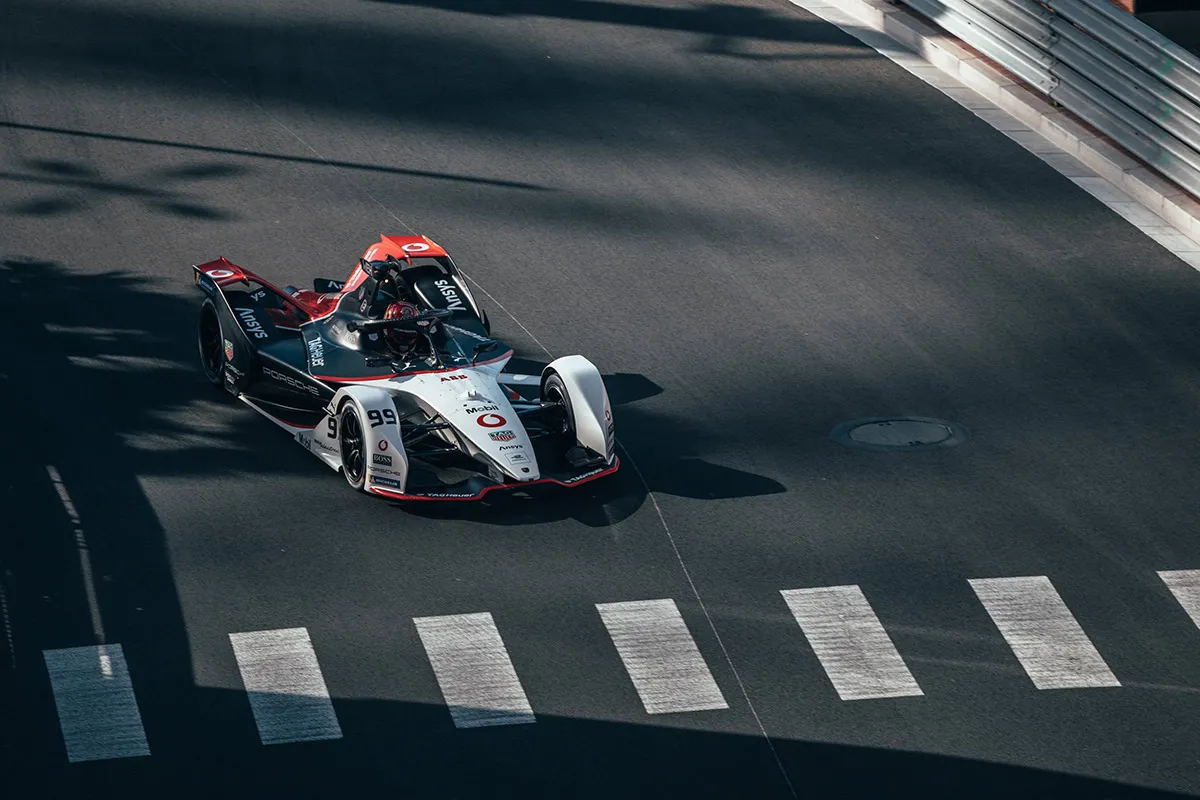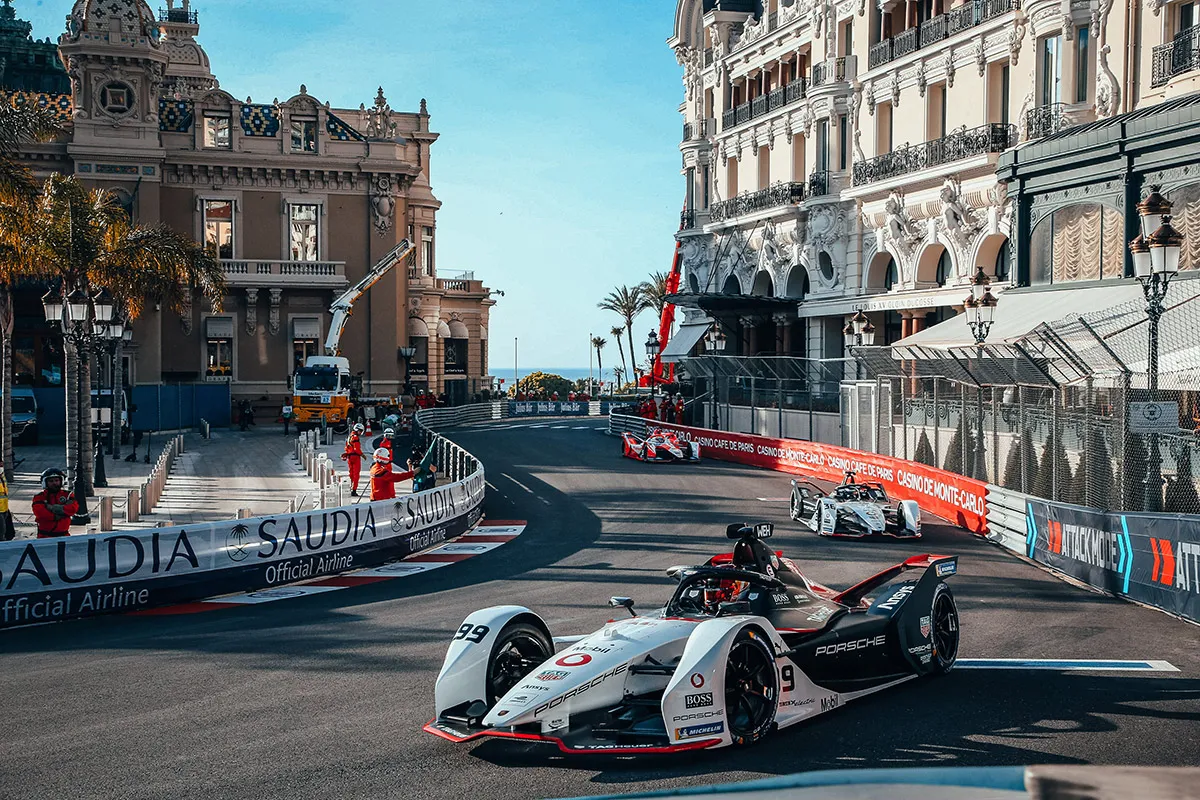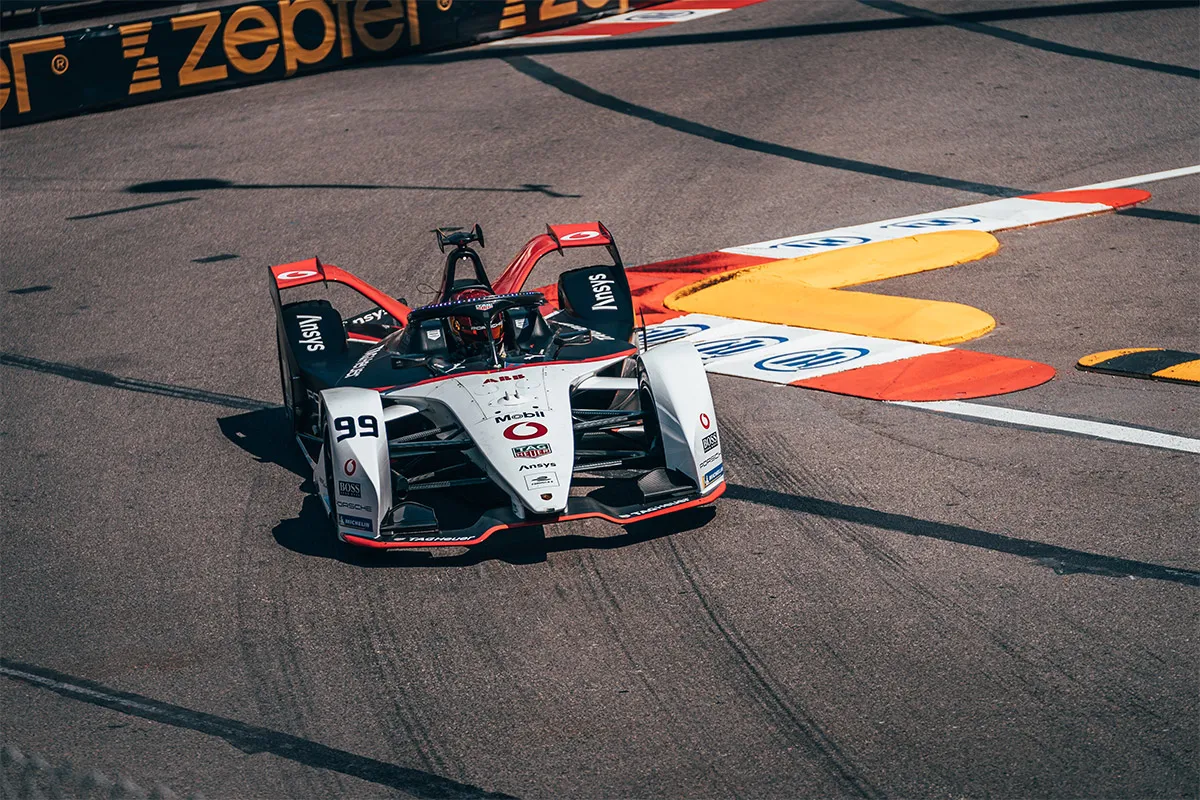Formula E racing cars don’t stand still for very long, and we’re not just talking about them speeding around city-centre tracks at 174mph. The sport is also a technological testbed where the possibilities of electric vehicles are being explored in thrilling races that most would agree are a lot less predictable than Formula One.
Innovation is at the heart of this all-electric championship, and competition is too. A certain amount of a Formula E car is standardised across the field: the chassis, battery, aerodynamics, tyres and more are the same for all teams and drivers. This caps the cost of development and allows more teams to race and compete. But it also opens the door for innovation in other areas, says Dr Chris Vagg, an automotive engineer at the University of Bath who was integral to the development of Formula E’s electric powertrain.
“There is a technological arms race in all the things which aren’t standardised,” he says. “That includes the inverter, the motor, the gearbox, the brake-by-wire control system and all of the energy management of the control software that runs on the car. There’s no standardisation of any software on the car.”
Here, we explore the technologies that underpin one of the most technical and exciting races in the world.
The design
The word 'Batmobile' is often used to describe the distinctive chassis of the current Formula E car, known as the Gen2. Its streamlined form with a compact rear X-wing helps to increase downforce and gives drivers a more responsive car on-track. It also helps maintain aerodynamic grip when chasing another car, while enclosed wheels reduce the turbulence coming from the car in front.
The upshot is greater opportunities to chase down opponents and overtake. Made from carbon fibre, aluminium and kevlar, the lightweight car weighs just 800kg, including the battery and driver.

The battery
The car’s ‘fuel tank’ has grown substantially since Formula E’s inception. With twice the storage capacity of the first-generation Formula E cars (which drivers swapped for another mid-race), the current batteries have greater voltage and charge faster, meaning they go for longer and produce more power.
Current cars have a maximum power output of 250kW, allowing them to race at speeds of up to 280kmh. Designed by McLaren Applied Technologies, they also allow acceleration of 0-100kmh in a nippy 2.8 seconds.
The powertrain
The powertrain describes everything that turns the energy from the battery into raw velocity, including the motor, inverter and the software that enables the transfer of energy. “In Formula E the biggest performance differentiator is the efficiency of the powertrain,” says Vagg. “There’s a big focus on the power-electronics, on the motor and on the gearbox, making them as efficient as they possibly can be.”
This is where the technological race at the heart of Formula E occurs. Teams design their own inverter to convert electrical charge from the battery from a direct current (DC) to an alternating current (AC). Then the motor uses the electricity to drive the wheels. “The silicon-carbide power-electronics powering the motor uses the best magnets you can get your hands on,” Vagg says.

The brakes
Braking is one of the key aspects of Formula E because no car on the track begins a race with enough battery power to finish it. The driver has to recover energy during the race through regenerative braking. Fundamentally the same technology found in hybrid road cars, this uses the ‘wasted’ energy required to slow a car down to recharge its battery. “Exactly where you do that at different points on the circuit and how much energy you recover on different corners has a huge bearing on your lap time,” says Vagg.
The rear brakes are particularly interesting because they work on a brake-by-wire system. When the driver presses the brake pedal, the onboard electronic control unit balances how much braking the driver wants with how much is supplied by the regenerative system in the rear. “You need to seamlessly blend the electrical braking with the hydraulic braking,” says Vagg, giving the driver a smoother, more consistent experience.
Steering wheel
If you thought your dashboard was complicated, you should see the controls at the heart of a Formula E cockpit. The wheel is equipped with a screen that displays huge amounts of data: everything from speed and range to brake temperature and tyre pressure.
Meanwhile, buttons and paddles allow drivers to toggle through mind-boggling car settings at 280km/h, adjusting front and rear brake bias or regenerative control. Our favourite bit? The ATK button, for Attack Mode. This turbo-style function gives drivers 35kW of extra power in designated zones on the track.

The halo
All FIA single-seater race cars must have what’s called a Halo, a head-protection device designed to shield drivers during impacts. Made from high-strength titanium, it is said to be able to withstand the force of 17 Formula E cars stacked on top of it.
In Formula One, the design has been criticised for being ugly and unwieldy, but it blends more seamlessly into the dynamic design of these electric racers. What’s more, in Formula E, the halo includes a strip of LEDs that glow magenta or blue to tell spectators when a car is in Attack Mode.
